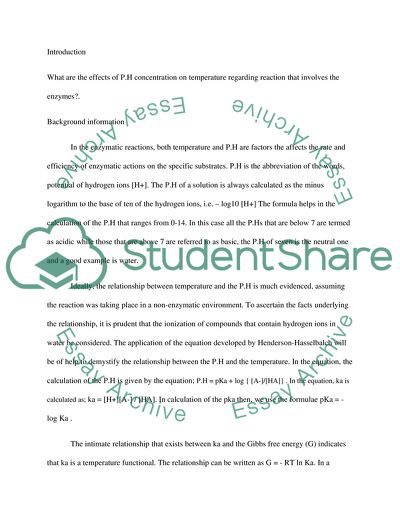Cite this document
(The Effect of P.H on Temperature in Enzymatic Reactions Lab Report Example | Topics and Well Written Essays - 1500 words, n.d.)
The Effect of P.H on Temperature in Enzymatic Reactions Lab Report Example | Topics and Well Written Essays - 1500 words. https://studentshare.org/biology/1766323-does-ph-affect-heat-produced-in-enzyme-reactions
The Effect of P.H on Temperature in Enzymatic Reactions Lab Report Example | Topics and Well Written Essays - 1500 words. https://studentshare.org/biology/1766323-does-ph-affect-heat-produced-in-enzyme-reactions
(The Effect of P.H on Temperature in Enzymatic Reactions Lab Report Example | Topics and Well Written Essays - 1500 Words)
The Effect of P.H on Temperature in Enzymatic Reactions Lab Report Example | Topics and Well Written Essays - 1500 Words. https://studentshare.org/biology/1766323-does-ph-affect-heat-produced-in-enzyme-reactions.
The Effect of P.H on Temperature in Enzymatic Reactions Lab Report Example | Topics and Well Written Essays - 1500 Words. https://studentshare.org/biology/1766323-does-ph-affect-heat-produced-in-enzyme-reactions.
“The Effect of P.H on Temperature in Enzymatic Reactions Lab Report Example | Topics and Well Written Essays - 1500 Words”. https://studentshare.org/biology/1766323-does-ph-affect-heat-produced-in-enzyme-reactions.


